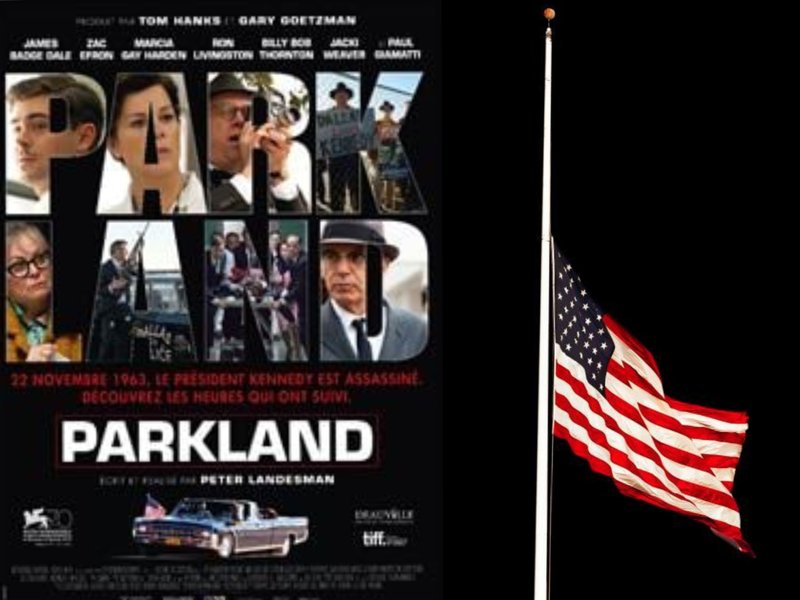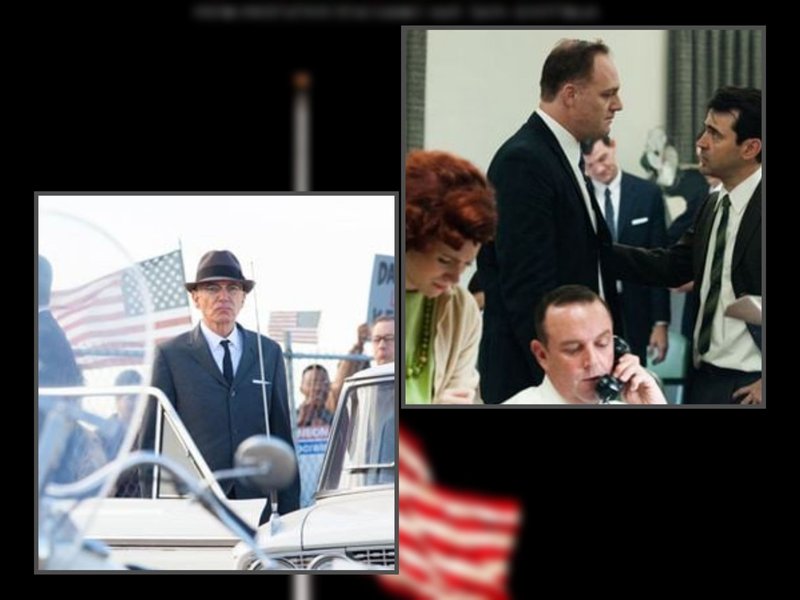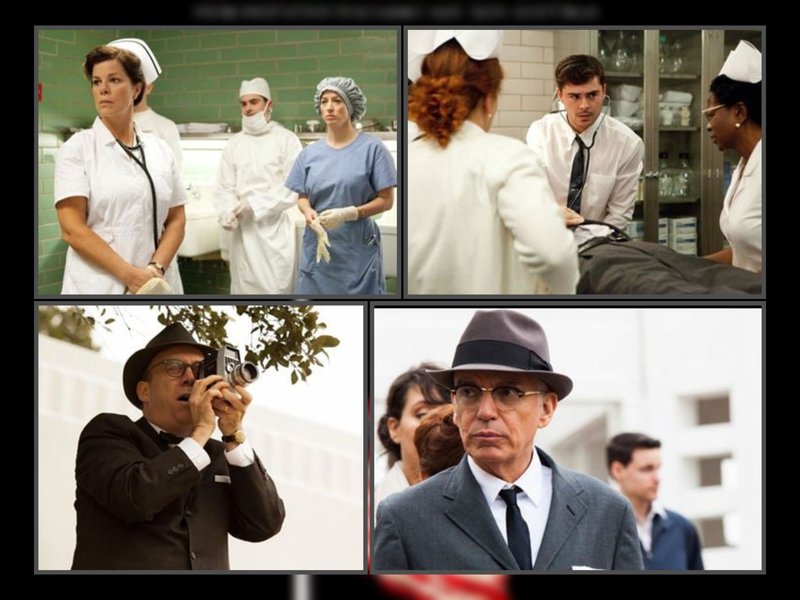PARKLAND | Review y Opinión [ESP-ENG]

La película Parkland fue estrenada en el 2013. El director Peter Landesman cuenta lo sucedido haciendo uso del recurso documental, emotivo y crítico del estado de shock experimentado en estados unidos. La película narra lo vivido en el Hospital Parkland de Dallas; el director dibuja el evento confuso y emotivo, sobre una fecha sensible. En noviembre de 1963, ocurre el asesinato del presidente de los Estados Unidos John F. Kennedy; no obstante, el director plantea la mirada de quienes asistieron y protegieron al presidente; también el sentir de las personas que presenciaron el asesinato y de los sujetos que buscaron protagonismo durante y después de la tragedia. Es un film poco valorado y distante de la proyección JFK que narra el asesinato del presidente Kennedy, por tanto, no hay punto de comparación. Creo que una de las razones de la fuerte crítica se debe a las infravaloradas connotaciones emocionales y sociales de los personajes, entre otros elementos a describir. Parkland, comparte los grupos de seguridad avergonzados, los ciudadanos dolidos, médicos consternados y la avidez de los medios de comunicación por las fuentes visuales que atestiguen el homicidio.
The world of cinema has audiovisual productions that recreate stories based on real events on the same subject, but they differ from each other by the structure of the particular angle so that the plot is different and attractive to tell the truth. The film Parkland has the purpose of inviting the viewer to live a crucial and emotional moment that shook American society and generated chaos in the collective and among those who were in direct contact with the terrible outcome.
The film Parkland was released in 2013. The director, Peter Landsman, tells the story of what happened, making use of the documentary resource to be emotional and critical of the state of shock experienced in the United States. The film narrates what happened at Parkland Hospital in Dallas; the director draws on the confusing and emotional event on a sensitive date. In November 1963, the assassination of U.S. President John F. Kennedy took place; however, the director presents the view of those who assisted and protected the president, as well as the feelings of the people who witnessed the assassination and the subjects who sought prominence during and after the tragedy. It is an underrated film and distant from the JFK screening that narrates the assassination of President Kennedy; therefore, there is no point of comparison. I think one of the reasons for the strong criticism is due to the underrated emotional and social connotations of the characters, among other elements to be described. Parkland shares the embarrassed security groups, the grieving citizens, the dismayed doctors, and the media piranhas for the greed of visual sources testifying to the homicide.

Parkland contextualiza al espectador a través de letras mecanografiadas y narrativas sobre los tres días del penoso hecho real de género documental y dramático. Luego se muestran videos testimoniales que dibujan la visita del Presidente Kennedy a Dallas, acompañado Jackie Kennedy. Mientras esto sucede, se muestran las imágenes ficticias del movimiento habitual del Hospital Parkland que pronto será sede del desespero y la lucha para evitar el luto en el país. Grabaciones tradicionales de ciudadanos felices en espera de ver al presidente y tomas del despliegue de seguridad de diferentes cuerpos que funcionan por separados para un mismo fin, proteger al presidente. Desde que comienza Parkland el ritmo dinámico y acelerado te sitúa de inmediato en el desconcierto, la intranquilidad y la imperiosa necesidad de atender la emergencia, proteger la integridad y resolver el crimen de presidente. Entonces, el Hospital Parkland es el espacio de concentración del argumento y al unísono un conjunto de acciones para dar con el paradero del asesino. De forma paralela, la multitud, los medios, la seguridad y la política están revueltos, lo que entorpecen el trabajo de investigación. El Hospital vive dos momentos intensos que se traduce en la paradoja de valorar la vida de fos sujetos totalmente diferentes que son asistidos por personas ajenas que nunca pensaron estar en el lugar de los hechos ¿Quién merece vivir?.
Parkland contextualizes the viewer through typed letters and narratives about the three days of the painful real event of documentary and dramatic genre. Then testimonial videos are shown depicting President Kennedy's visit to Dallas, accompanied by Jackie Kennedy. While this is happening, fictitious images are shown of the usual movement of Parkland Hospital, soon to be the site of despair and the struggle to avoid mourning in the country. Traditional footage of happy citizens waiting to see the president and shots of the security deployment of different bodies working separately for the same purpose, to protect the president. From the moment Parkland begins, the dynamic and accelerated pace immediately places you in the bewilderment, the uneasiness, and the imperious need to attend to the emergency, protect the integrity, and solve the president's crime. Then, Parkland Hospital is the space of concentration for the plot and, in unison, a set of actions to find the whereabouts of the murderer. At the same time, the crowd, the media, security, and politics are in turmoil, which hinders the work of the investigation. The hospital experiences two intense moments that translate into the paradox of valuing the lives of two totally different subjects who are assisted by outsiders who never thought they would be on the scene. Who deserves to live?

El suspenso se pasea entre sonidos agudos y graves, música que genera emociones; asimismo, ruidos que comparte el espectador y los involucrados como: gritos, llantos, discusiones y disparos que forman parte del caos. La voz del narrador suministra datos sobre la situación intrincada, la voz auxilia al espectador para analizar los escenarios y los protagonistas. Las imágenes son discursos compuestos de archivos históricos que entrelazan las secuencias diseñadas con efecto vintage, generando realidad en las escenas y a la vez ambientada para la época, creando una dimensión real. Además, los vestuarios, la escenografía y el traje de la primera dama son referentes del lamentable episodio.
El diálogo está compuesto de ideas indignantes, discusiones confusas entre cuerpos de seguridad; platicas para hermanar con quienes padecen, son diálogos diseñados para los tres días del hito histórico. Sin embargo, lo sentí débil y acelerado; al mismo tiempo, le restó fuerza a las actuaciones de grandes actores, algunas escenas sirvieron para percibir el talento actoral; en tal sentido, las imágenes compensan el significado del argumento de la trama.
The suspense moves between high and low-pitched sounds, music that generates emotions, and noises shared by the spectator and those involved, such as screams, cries, arguments, and gunshots that are part of the chaos. The narrator's voice provides data about the intricate situation; the voice helps the viewer analyze the scenarios and the protagonists. The images are speeches composed of historical archives that intertwine the sequences designed with a vintage effect, generating reality in the scenes and at the same time setting them for the time, creating a real dimension. In addition, the costumes, the scenography, and the costume of the first lady are references to the unfortunate episode.
The dialogue is made up of outrageous ideas, confusing discussions between security forces, talks to unite with those who suffer, and dialogues designed for the three days of the historical milestone. However, I felt it was weak and rushed; at the same time, it detracted from the strength of the performances of great actors. Some scenes served to perceive the acting talent; in that sense, the images compensated for the meaning of the plot's argument.

Entre los actores destacados en este séptimo arte, se encuentran, Marcia Gay Harden, asume el papel de una enfermera imparcial en el trabajo, alienta a los compañeros con temperamento, pero serena, fue lainterpretación con menor diálogo y me pareció regia. Zac Efron, el médico residente, es un rompecorazones seguro de sí mismo hasta que le golpea la realidad y trata de arreglar lo inevitable, al principio con una actuación floja que luego mejora. Me gustó, Paul Giamatti, un feliz espectador que graba la tragedia que perturba el estado emocional y es obligado a colaborar con la investigación y pide respeto para el presidente Kennedy. El agente especial del servicio secreto, el actor Billy Bob es uno de los profesionales de la seguridad; la actitud fuerte y de disgusto por los resultados le lleva a buscar de dónde provino la bala y d3scubrir información que le ofuscan, hay verdades desagradables. Parkland tiene buen reparto; por último, menciono al supuesto hombre que asesino al presidente, Jeremy Strong encarna a Ly Harvey O, una persona sin remordimiento, seguro de los ideales socialista, conocimiento de arma e indiferente por lo sucedido.
¿Por qué debo ver Parkland? Es una proyección visual referencial para hondar más acerca de este hecho trágico. El tema se enfoca en imágenes repentinas que agotan, supongo para vivir la experiencia del Hospital Parkland; me gusta que valoriza los sentimientos y la reacción de las personas angustiados por diferentes razones y desde mi óptica huérfanos por la pérdida del presidente Kennedy. Otro punto sensible, es observar la sorpresa de los jefes de seguridad producto del suceso terrible y tener que continuar trabajando con mayor desgaste mientra se cuestionan, hay juicios de irresponsabilidad, se sufre indignación y el ejercicio del poder es repudiado. Ciertamente mencioné que hay debilidad actoral y diálogos pocos significativos; sin embargo vale la pena tomarse el tiempo para estudiar la intención del director y saber qué pasó después con quienes estuvieron en el hecho de conmoción y descontrol. Además el director puso en segundo plano las imágenes del presidente para concentrse en los personajes alrededor.
Among the outstanding actors of this seventh art is Marcia Gay Harden, who plays the role of an impartial nurse at work, encouraging her colleagues with temperament but showing herself to be serene. It was the performance with the least dialogue, and I thought it was great. Zac Efron, the resident doctor, is a self-assured heartthrob until he is hit by reality and tries to fix the inevitable, at first with a weak performance that then improves. I liked Paul Giamatti, a happy-go-lucky bystander who records the emotionally disturbing tragedy, is forced to cooperate with the investigation and demands respect for President Kennedy. The Secret Service special agent, actor Billy Bob, is one of the security professionals; his tough attitude and distaste for the results lead him to look for where the bullet came from and uncover information that obfuscates him, there are unpleasant truths. Parkland has a good cast; lastly, I mention the alleged man who killed the president. Jeremy Strong plays Ly Harvey O, a remorseless person, secure in his socialist ideals, knowledgeable about guns and indifferent to what happened.
Why should I see Parkland? It is a referential visual projection to delve deeper into this tragic event. The theme focuses on sudden images that exhaust, I guess to live the experience of Parkland Hospital; I like that it values the feelings and reaction of people distressed for different reasons and from my point of view orphans by the loss of President Kennedy. Another sensitive point is to observe the surprise of the security chiefs as a result of the terrible event and having to continue working with greater wear and tear while they are questioned. There are judgments of irresponsibility, indignation is suffered, and the exercise of power is repudiated. Certainly, I mentioned that there are weak actors and little meaningful dialogue, but it is worth taking the time to study the director's intention and to know what happened afterward to those who were involved in the event of commotion and lack of control. In addition, the director put the images of the president in the background to concentrate on the surrounding characters.
Un comentario equivale un acto de reconocimiento


Soy miembro de @motherhood



Las publicaciones elaboradas en mi blog son realizadas desde mi móvil Samsung Galaxy A33